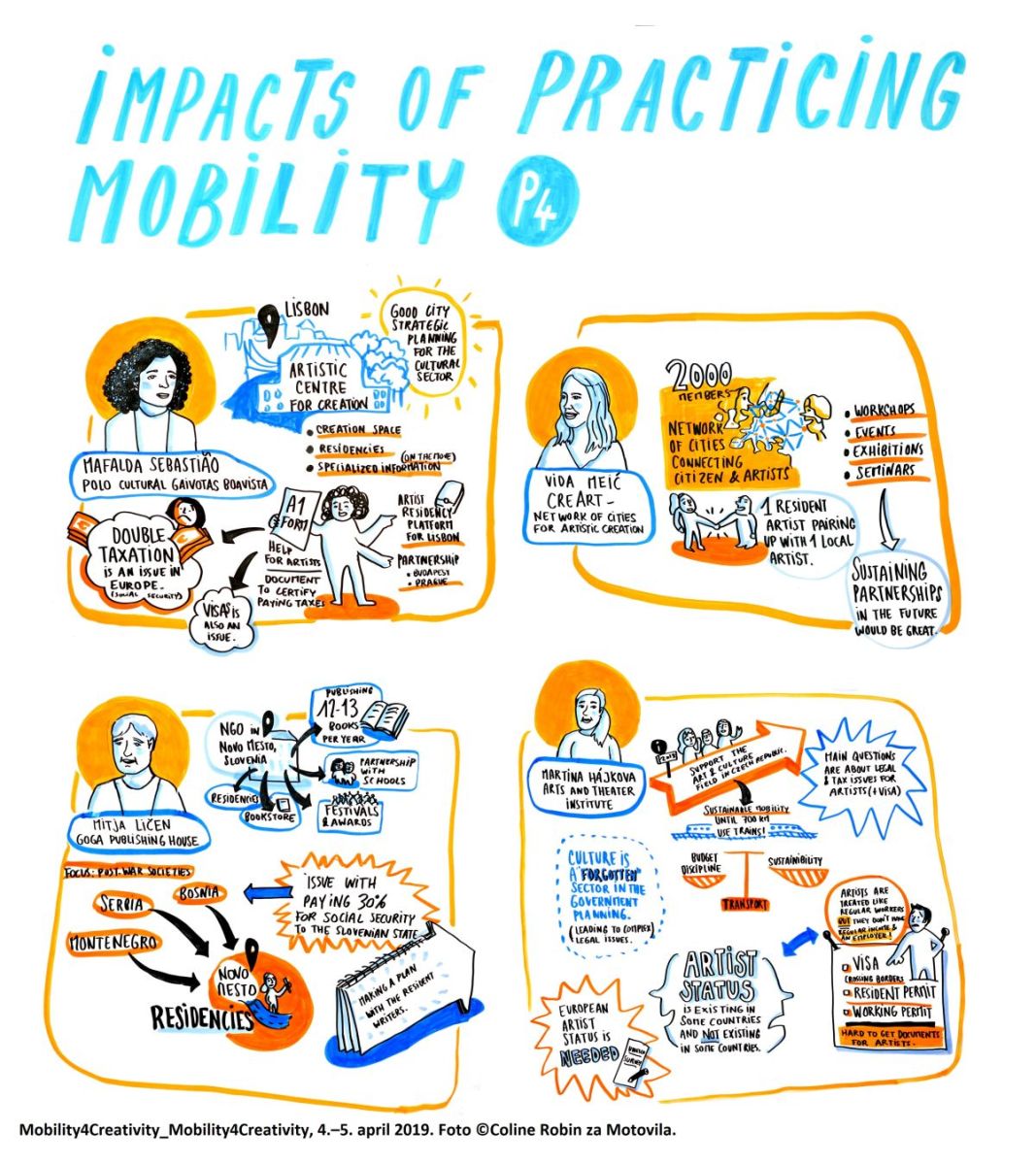Novice
By hearing about failures, we can learn how to avoid the same mistakes
Invited panellists at the conference titled “Mobility for Creativity” discussed about the impacts of practising mobility. The conference organised by Motovila in Ljubljana on 4–5 April 2019, explored the benefits and challenges of international mobility in the cultural and creative sector (CCS), especially putting mobility’s environmental impact to the test.

As Magdalena Mullerova, Arts and Theatre Institute / CED CZ, talked with the panellists in this last discussion, it was clear that the mobility aspects of the panellists’ projects have all grown out of a need to fill in the gaps and create new connections in communities and beyond. At the same time, many artists and cultural professionals (or the organisations who are organising their mobility experiences), encounter bureaucratic issues that can often hinder their free flow across borders, especially individuals who are not from EU or when EU citizens venture beyond the Schengen Zone.
As Mafalda Sebastião from Polo Cultural Gaivotas Boavista, a project of the Lisbon City Council (PT) says, the former-primary-school-turned-artist-creation-centre where she works came about from a need to understanding what was lacking in the city of Lisbon: spaces for artists. Their mission is to give resources: creation rooms, artist residencies in 4 apartment, co-working space, as well as a new initiative offering special “forest homes” to foreign or Portuguese artists to develop a work in connection with Lisbon. At the same time they serve artists through exchange programmes, an AIR platform, an OTM Mobility Info Point and help artists deal a lot with the bureaucracy that comes with mobility, especially that related to visas, social security, health care and taxes.
Mitja Ličen sees the work of NGO Goga Publishing House (Novo mesto, SI) as providing doors to the content (Slovenian and foreign literary works) that they publish. Those doors can be: the bookstore they own, or through partnerships with schools, hospitals, libraries, or beyond, through the organisation of 3 festivals (short stories, street theatre, summer) and, for the last 13 years, a writer-in-residence programme. All of these activities bring the authors and books closer to the community and vice versa. Through the EU project Reading Balkans, their mobility model provides a network of residence programmes and dissemination activities.
Vida Meić told us about the project CreArt – Network of Cities for Artistic Creation in which the 2000-member Croatian Association of Visual Artists (HR) takes part. The CreArt network of 12 partner cities is a state-city-public initiative woven for citizens, with various models of mobility and exchange, including AiR programmes and touring exhibitions. A main exhibition held every year in 3 partner cities, featuring 1-2 works from every partner country. Through CreArt, 14 artists from Zagreb have had the opportunity to participate and 10 artists have come to Zagreb for various trainings by pairing with local artists. She sees sustainability of such projects as the key.
Martina Hájková from the Arts and Theatre Institute (CZ) shared a new project funded by the Ministry of Culture of the Czech Republic, Mobility Info Point/CzechMobility.info, which has been in place since May 2018. While its main goal is to deal with incoming/outgoing mobility of Czech artists/arts organisations, they’ve come to see that many organisations are dealing with other related issues such as taxes and copyright law. For example, some support programmes have a policy of using trains or buses for journeys under 700km, of course, when dealing with cultural mobility in the time of climate change, it can be a paradox when following financial guidelines and trying to do a cost/benefit analysis for small arts organisations who are struggling with budget discipline and sustainability issues. In just a short time, they’ve started to re-evaluate the goals of the project, based on the needs of the local Czech culture scene.
As the discussion continued, the panellists shared the many complications they have encountered concerning not just shorter-term mobility for artists and cultural professionals, but also the longer-term mobility that comes in the form of going to live and work in another country for more than 3 months. Ideally, this should function easily in Europe, but because of the precarious status of artists and cultural workers, in practice it can make it difficult for them to prove a steady source of income or acquire the other documents they need for acquiring residency in a different country.
Fortunately, as we learnt on Thursday’s panel about Information and Consultancy Provision, networks like On the Move and its Mobility Info Points (such as Polo Cultural Gaivotas Boavista, Dutch Culture and CzechMobility.info) and Your Europe Advice are good places to start when trying to tackle the bureaucracy and multitude of questions related to that side of our mobility. Being organised as networks also means that their members are devoted to sharing knowledge across borders to help us cross borders.
Back to FULL REPORT by Jana Renée Wilcoxen for Motovila, Ljubljana 2019.
CC Attribution-NonCommercial 4.0 International (CC BY-NC 4.0).
Further information about the #Mobility4Creativity conference.
The event was organized by the Motovila Institute in cooperation with Arts and Theatre Institute / CED CZ, DutchCulture / CED NL, Centro de Informacão Europa Criativa / CED PT, CED Ireland – MEDIA Office Dublin, Ministry of Culture of the Republic of Croatia / CED HR, Federal Chancellery of Austria, Arts and Culture / CED AT, SCCA–Ljubljana and CMEPIUS.


